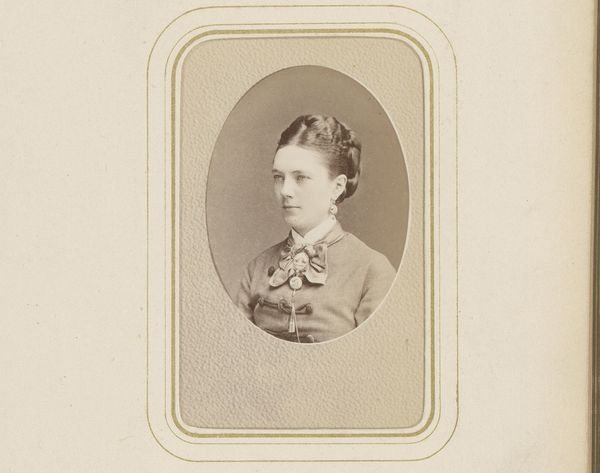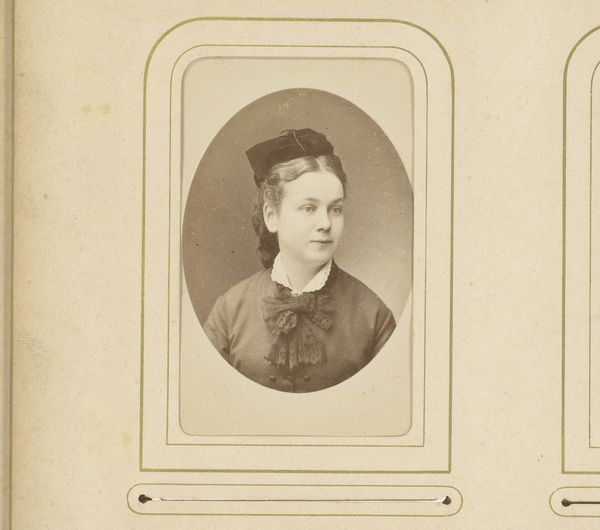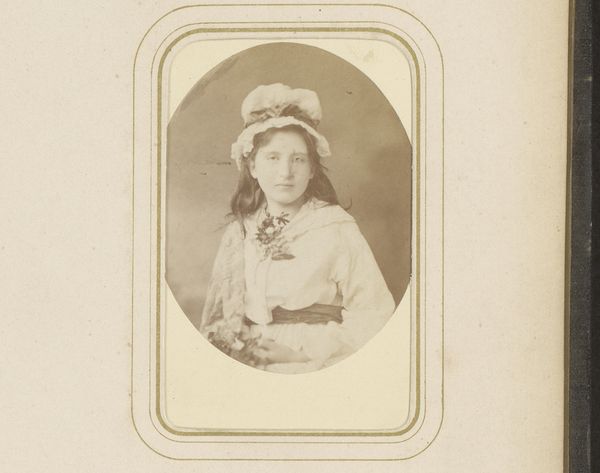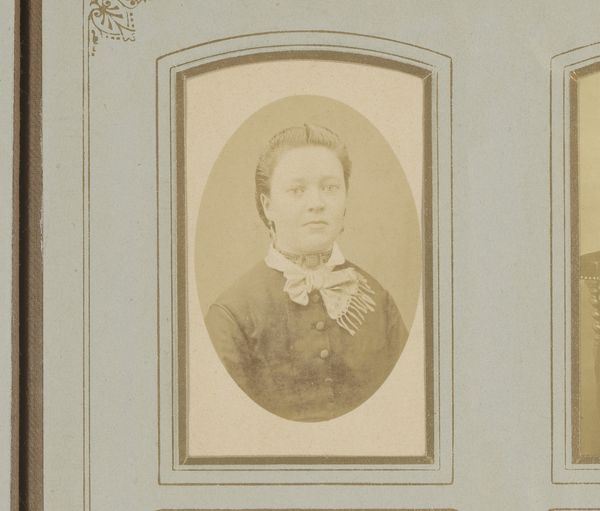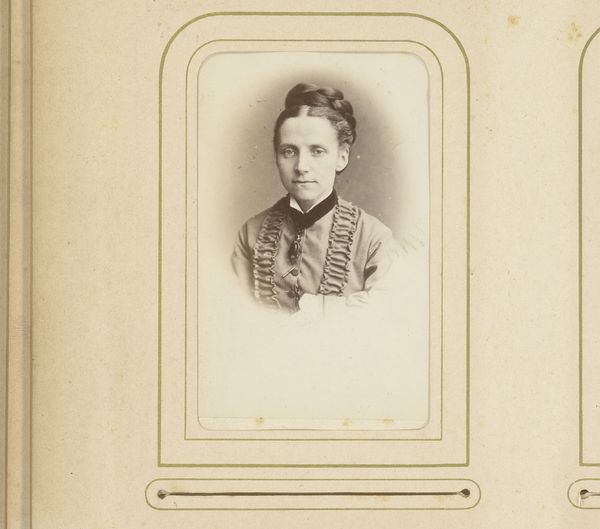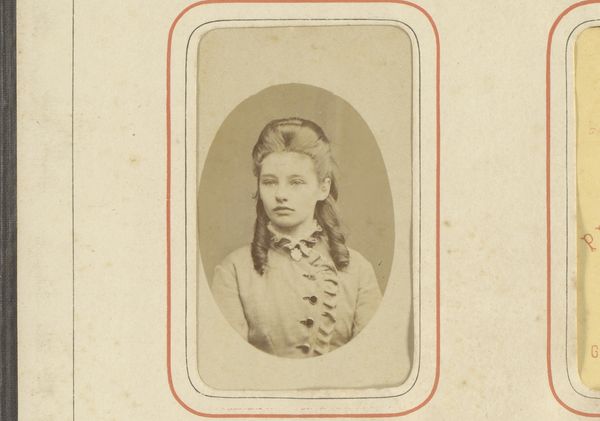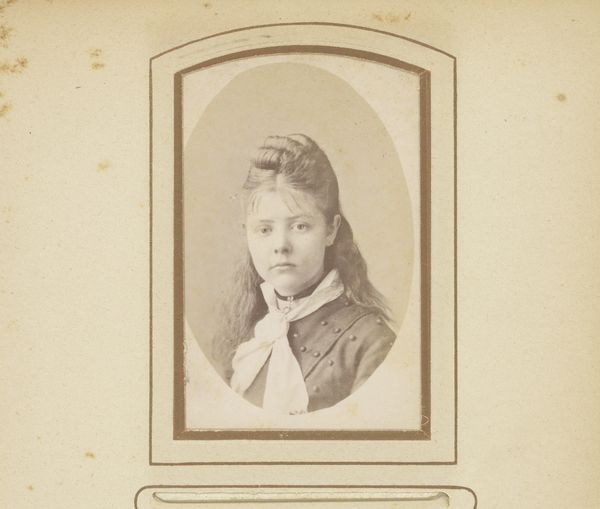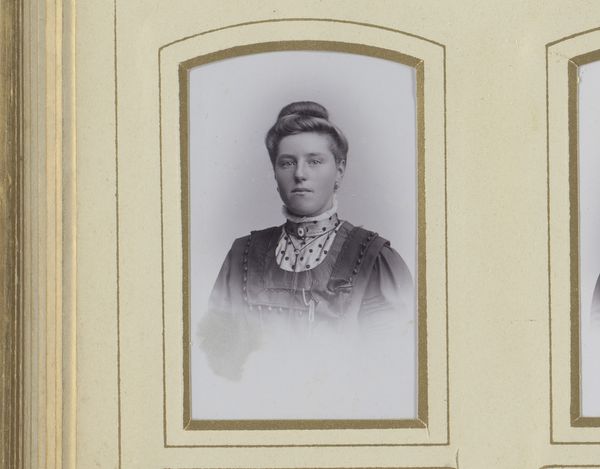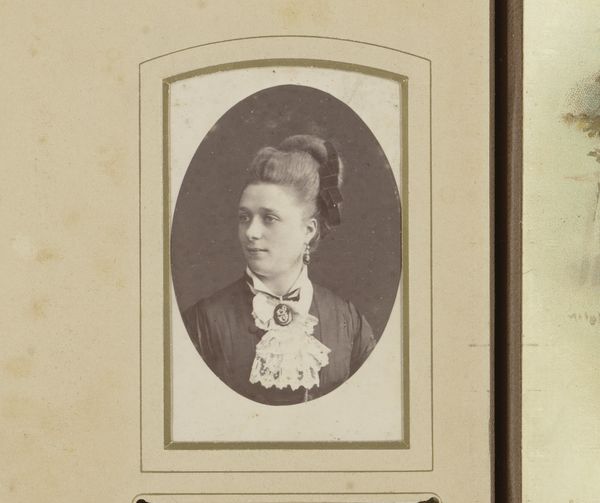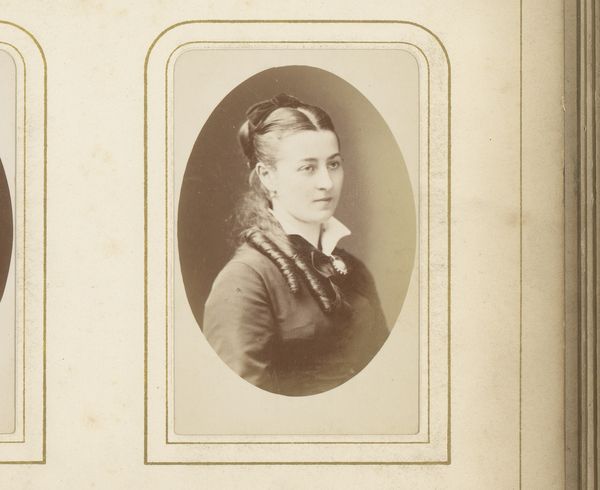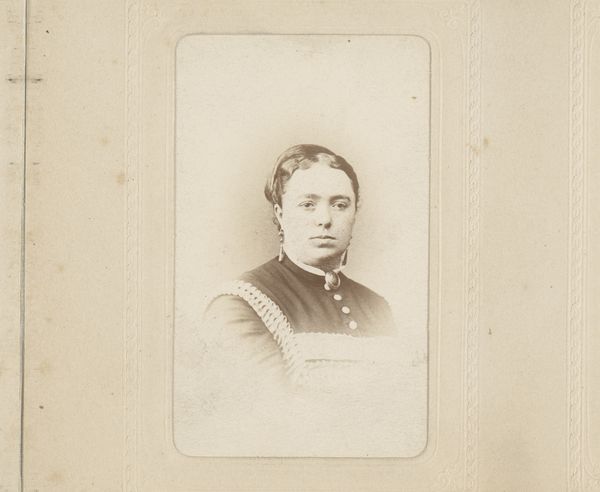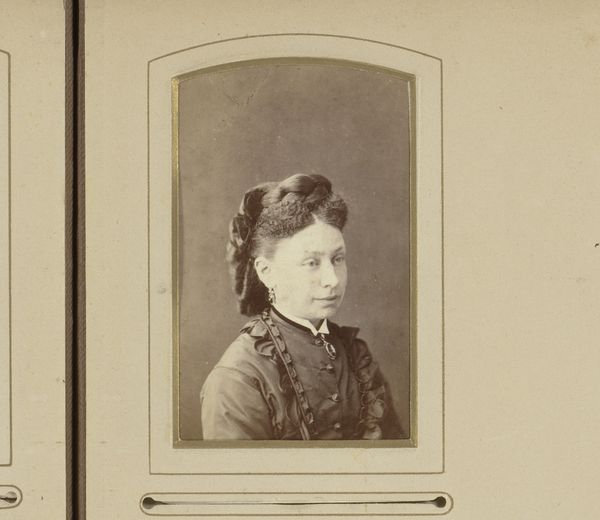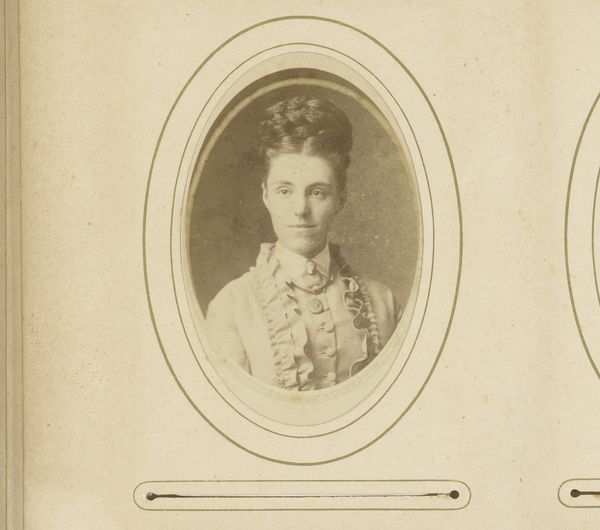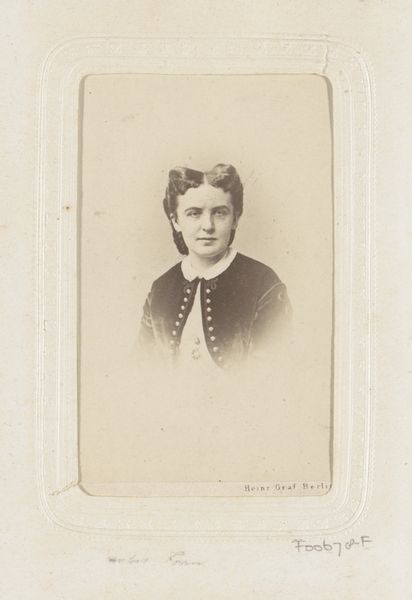
photography, albumen-print
#
portrait
#
photography
#
historical photography
#
19th century
#
albumen-print
Dimensions: height 82 mm, width 50 mm
Copyright: Rijks Museum: Open Domain
Curator: Hello, and welcome. Before us is "Portret van een jonge vrouw met halsketting met medaillon" a work by Godfried de Jong created sometime between 1874 and 1887. The piece employs the albumen print technique of photography. Editor: Well, immediately I'm struck by her calm. A bit melancholy, wouldn’t you say? Like she's peering out from a bygone era with secrets untold. And the oval framing within the larger format just accentuates that feeling of a preserved moment. Curator: Precisely. Albumen prints were exceedingly popular then, favored for their clarity and the tonal range they afforded. They gave these portraits an air of timelessness. This young woman with her intricate hairstyle and modest attire, complete with a delicate necklace and medallion, adheres to a certain Victorian sensibility. Editor: The medallion – it adds such intrigue. What was its significance, do you think? Family crest? Token of love? I always wonder about the untold narratives tucked away within such accessories. Curator: Given the era, it's quite plausible it signifies some familial or societal affiliation. Photography itself during this time served as a cultural instrument for recording lineage and identity. Her controlled gaze and poised demeanor suggest someone from a prominent social circle, reinforcing notions of respectability and status. The photo presents an echo of this past. Editor: I get the sense of fragility from these old photos. The sepia tones create such a beautiful dreamlike filter through which we are granted access to this moment. It almost feels voyeuristic, intruding on someone’s personal history. It's like she's a ghost trapped in amber. Curator: Consider too, the evolution of photographic portraiture at this time. It democratized image-making. Allowing broader society access to self-representation previously reserved for the elite, via painted portraiture. In doing so, it fostered new avenues for expression and communication that still resound today. Editor: True! It’s interesting to think how this simple portrait reflects such shifts. These photographic remnants really make you wonder about her life, her aspirations, her heartbreaks. Thank you for making this observation richer for me. Curator: The pleasure is all mine. Viewing through this cultural and historical lens reveals subtle symbolic cues which weave through photography, giving meaning to the portrait's enduring allure.
Comments
No comments
Be the first to comment and join the conversation on the ultimate creative platform.
